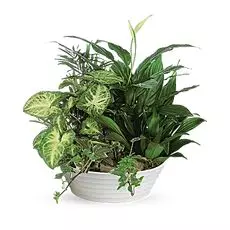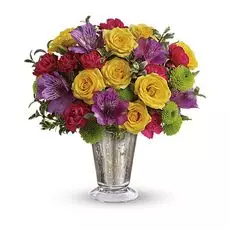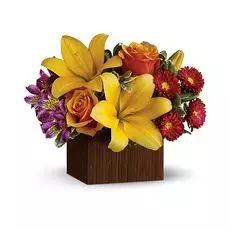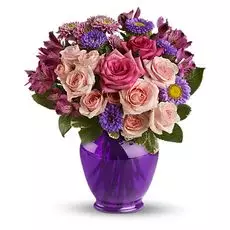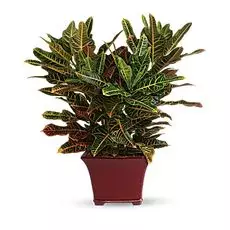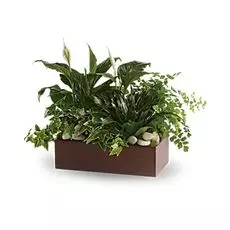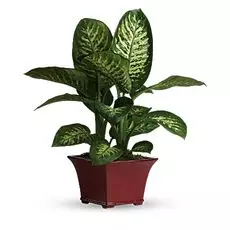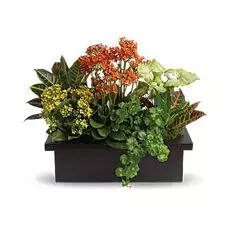How to Choose the Best Get Well Flowers
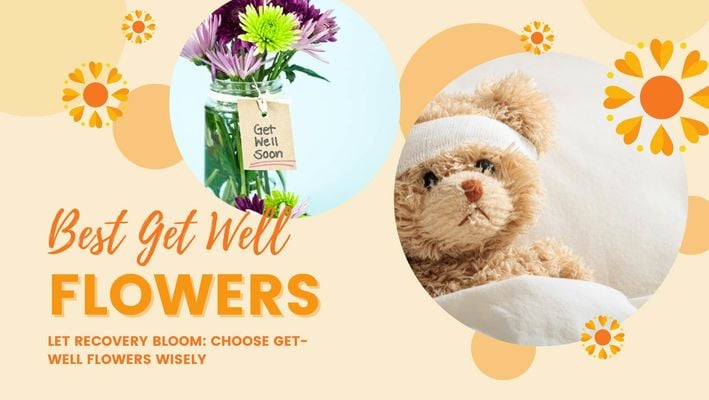
The act of sending flowers to convey support during illness or recovery is a timeless tradition rooted in cultural, emotional, and psychological significance. This report synthesizes research on flower symbolism, cultural considerations, therapeutic benefits, and practical guidelines to identify the best floral choices for "Get Well" gestures. Drawing from florist expertise, botanical symbolism, and recipient preferences, the analysis provides actionable insights for creating meaningful arrangements.
The Therapeutic Role of Flowers in Recovery
Psychological and Emotional Benefits
Flowers have been scientifically proven to enhance emotional well-being by reducing stress, anxiety, and perceived pain levels. Their vibrant colors and natural fragrances stimulate the release of serotonin and endorphins, fostering a sense of calm and optimism. In hospital settings, flowers counteract the sterility of clinical environments, offering visual warmth and a connection to nature. For example, sunflowers’ heliotropic behavior—turning toward the sun—symbolizes resilience, mirroring the recipient’s journey toward healing.
Physiological Impacts
Certain flowers, such as lavender, are linked to aromatherapeutic benefits. Lavender’s scent reduces heart rate and cortisol levels, promoting relaxation. Similarly, chrysanthemums contain pyrethrins, compounds with mild antiseptic properties, making them suitable for recovery spaces. However, strong fragrances like lilies may overwhelm sensitive individuals, necessitating careful selection.
Featured Get Well Flower Bouquet
Get Well Bouquet - buy from $56.99

What's in the Bouquet
- Sunflower – Central, attention-grabbing bloom that sets a sunny tone.
- Orange Roses – Provide a soft, romantic feel with layered petals and a pop of vibrant colour.
- White Daisy Pompons – Add innocence and freshness, tying the arrangement into a classic “get well” look.
- Purple Asters – Contribute depth and a cool-tone contrast against the brighter colors.
- Red Alstroemeria – Offers interesting petal markings and a further dimension of lively color.
- Foliage (Ferns, Greens) – Fills out the design and adds a natural, balanced backdrop.
- Bee Accents – Whimsical picks that underscore the “Bee Well Soon” theme.
Expert Teardown of Bouquet
Summary of Key Flowers and Vibe
A whimsical “Bee Well Soon” container houses a bright and cheerful mix of flowers designed to lift spirits. The arrangement’s bold colors—yellow, orange, purple, red, and white—complement fun bee pick accents, making it a perfect gift for sending get-well wishes or general cheer.
Color Theory & Harmony
Picture walking into a room flooded with sunlit oranges, buttery yellows, and pops of lavender—it’s like a burst of confetti for your mood. These shades don’t just sit there; they dance. Sunny yellows and deep purples? Total opposites, but together they’re electric (think lemonade stand meets twilight sky). Then we toss in a dash of scarlet—just enough to make your heart skip—and mellow it all out with clean whites, like a deep breath after laughing too hard.
It’s not random, either. We tweak ratios like a barista perfecting a latte: enough warmth to feel cozy, enough contrast to keep your eyes hooked, and zero chance of one color hogging the spotlight. Want that “brunch table on a spring morning” vibe? This combo’s your jam.
Design Structure & Mechanics
Arranged in a dome-like style, the bouquet appears evenly distributed with focal flowers (sunflower, roses) slightly elevated. Smaller accents such as daisies and asters surround these bigger blooms, preventing any one element from dominating. A sturdy container helps maintain stability, especially important for a playful get-well arrangement that may be moved around frequently.
Proportion & Scale
The bouquet’s size is proportionate to the novelty container, ensuring the design looks full and abundant without appearing top-heavy. The sunflower and roses occupy prime positions, while the smaller blooms and foliage frame them neatly. This balance helps each flower type remain visible and contributes to an overall harmonious silhouette.
Texture & Visual Depth
From the sunflower’s textured center to the layered petals of roses and alstroemeria, multiple textures draw the eye through the arrangement. The soft daisy faces contrast the intricate aster clusters, and wispy fern fronds bring a lively, airy feel that further enhances visual interest.
Fragrance & Practical Considerations
Sunflowers are relatively mild in scent, while roses can introduce a subtle, classic perfume. Alstroemeria and asters offer minimal fragrance, making this bouquet approachable even in smaller indoor spaces. Topping off water levels daily and re-cutting stems at an angle will help maximize vase life—important for a get-well gift intended to brighten someone’s environment for as long as possible.
Overall Artistic Impact
Playful yet uplifting, this bee-themed get-well bouquet packs a colorful punch. The combination of sunny blooms, varied textures, and whimsical bee picks ensures a heartfelt message of encouragement that’s sure to lift spirits and convey warm wishes for a speedy recovery.
Opinion: Why Our “Get Well Bouquet” Stands Out
We think this bouquet perfectly balances fun and cheer—ideal for a get-well surprise. From the bright sunflower in the center to the pops of orange, red, and purple, each bloom feels deliberately chosen to lift someone’s spirits. The whimsical bee picks and playful container add a lightheartedness that goes beyond typical “get well” arrangements. Plus, the variety of textures—from the soft petals of daisies to the layered roses—ensures it’s both visually interesting and comforting. Overall, it’s a radiant burst of color and good wishes that’s sure to make someone smile every time they catch a glimpse of it.
If you think our Get Well Bouquet would suit the person you care for you can buy these flowers here.
Floral Symbolism and Meaning in Get Well Arrangements
Core Flowers and Their Messages
- Sunflowers: Symbolize joy, longevity, and unwavering support. Their bright yellow petals evoke optimism, ideal for uplifting spirits.
- Pink Roses: Represent gratitude and appreciation, offering a gentle expression of care without the romantic connotations of red roses.
- White Lilies: Associated with purity and renewal, they convey hope for restored health. However, their link to funerals in some cultures requires contextual awareness.
- Hyacinths: With their soothing fragrance, hyacinths symbolize rebirth and tranquility, aiding emotional recovery.
- Carnations: Long-lasting and hypoallergenic, white carnations signify innocence, while pink varieties express admiration.
Complementary Foliage and Fillers
- Eucalyptus: Adds texture and a fresh scent, symbolizing protection and healing.
- Fern Fronds: Represent secret bonds of love, subtly reinforcing emotional support.
- Baby’s Breath: Symbolizes everlasting love, often used to add volume and delicate contrast.
Cultural and Contextual Considerations
Regional Symbolism and Taboos
- Vietnam: White flowers are associated with funerals, making them inappropriate for hospital visits. Chrysanthemums and marigolds are also avoided due to their use in ancestral worship. Instead, fruit baskets or swallow nest soups are preferred.
- East Asia: Lilies and chrysanthemums carry funerary connotations, whereas peonies symbolize prosperity and are widely accepted.
- Western Contexts: Red roses may be perceived as romantic, whereas yellow roses denote friendship, making them safer for platonic relationships.
Hospital Policies and Practicality
The integration of floral gestures within hospital environments requires careful navigation of institutional policies, patient safety protocols, and practical constraints. While flowers symbolize care and hope, their presence in medical settings is governed by a complex interplay of hygiene standards, spatial limitations, and patient-specific considerations.
Intensive Care and High-Risk Units
Intensive care units (ICUs) and critical care wards universally restrict or prohibit fresh floral arrangements due to heightened infection risks. Bacterial growth in stagnant vase water, particularly from pathogens like Pseudomonas or Acinetobacter, poses a documented threat to immunocompromised patients. These policies extend beyond ICUs to transplant units, oncology departments, and neonatal wards, where even minimal microbial exposure could compromise recovery.
Some institutions enforce broader bans, including prohibitions on latex balloons—a common allergen—and Mylar balloons, which may interfere with medical equipment. In cardiac care and post-surgical recovery areas, restrictions often prioritize patient safety over aesthetic gestures, reflecting a "better safe than sorry" approach endorsed by infection control specialists.
Logistical and Spatial Challenges
Beyond microbial concerns, logistical challenges influence hospital flower policies. ICU rooms, designed for life-saving equipment and rapid staff movement, lack space for large bouquets. Nurses frequently note that oversized arrangements obstruct access to monitors or emergency tools, creating tripping hazards in cramped quarters.
Deliveries may also face delays in high-security areas, with floral gifts held at loading docks for hours or days, risking wilting before reaching the patient. For staff, managing perishable gifts diverts attention from critical care duties, prompting many hospitals to reroute deliveries to family members or discourage them entirely in favor of non-perishable alternatives.
Low-Maintenance Botanical Alternatives
When floral gifts are permissible, hardier plants like orchids and succulents emerge as optimal choices. Orchids, with their waxy petals and minimal pollen production, thrive in indirect light and require watering only weekly, reducing maintenance burdens on hospital staff.
Snake plants (Sansevieria) and ZZ plants (Zamioculcas zamiifolia) offer additional advantages: their architectural foliage purifies indoor air while surviving weeks without water. Potted succulents, such as jade or echeveria, provide enduring symbolism of resilience without triggering allergies. These plants often outlast hospital stays, transitioning seamlessly to home recovery environments as living reminders of support.
Dried and Fabric Arrangements
Dried flower bouquets have gained traction as a pragmatic compromise between tradition and safety. Devoid of water requirements, they eliminate bacterial breeding grounds while maintaining visual warmth. Modern drying techniques preserve vibrant hues in lavender, statice, and craspedia, allowing arrangements to retain their form for months.
Fabric-based alternatives, including silk peonies or linen-wrapped wheat stems, offer further customization—hospitals increasingly permit these in pediatric wards, where they withstand curious handling without shedding pollen or petals. Such arrangements align with sustainability initiatives, as they reduce waste compared to discarded fresh blooms.
Navigating Regional and Cultural Nuances
Policies vary globally, reflecting local risk assessments and cultural norms. In some European hospitals, floral prohibitions extend to general wards due to Aspergillus spore risks, while Japanese hospitals often embrace ikebana arrangements as therapeutic art.
Religious considerations also play a role: Islamic traditions permit flowers during illness, whereas certain East Asian cultures associate white blooms with mourning, necessitating culturally sensitive selections.
Staff and Family Guidance
Proactive communication with hospital staff ensures compliance with unit-specific rules. Many institutions provide online guidelines detailing permitted items, while charge nurses can clarify real-time restrictions.
For families, florists increasingly offer "hospital-safe" curation services, combining hypoallergenic blooms with compact vases that fit bedside trays. Alternatives like framed pressed flowers or seed paper cards—embedded with plantable wildflowers—provide symbolic gestures without violating policies.
Balancing Compassion and Clinical Pragmatism
In this evolving landscape, the intent behind floral gifts remains paramount. By aligning choices with institutional guidelines and patient needs, well-wishers can deliver comfort without compromising safety—a balance that honors both compassion and clinical pragmatism.
Practical Guidelines for Selecting Get Well Flowers
Personalized Selection Framework
- Assess Personality: Vibrant sunflowers suit extroverts; serene orchids align with introspective individuals.
- Allergy Considerations: We advise going for pollen-free options like roses or orchids.
- Gender-Neutral Options: Tropical blooms like anthuriums or bold gerbera daisies avoid stereotypical “feminine” or “masculine” associations.
- Age-Appropriate Selections: Younger recipients may prefer playful daisies, while older individuals often favor classic roses.
- Incorporate Preferences: If the recipient adores peonies, prioritize these even if their symbolism is secondary.
- Symbolic Pairings: Combine yellow roses (friendship) with basil (good wishes) for layered meaning.
- Delivery Logistics: Choose self-watering arrangements or subscription services for long-term recoveries.
Color Psychology in Floral Design
- Yellow: Boosts energy and optimism (e.g., sunflowers, goldenrod).
- Pink: Conveys gentle affection (e.g., tulips, carnations).
- Blue: Promotes calmness (e.g., hydrangeas, cornflowers).
- White: Symbolizes purity but requires cultural sensitivity.
Innovative Trends and Complementary Gifts
Beyond Traditional Bouquets
- Dried Flower Arrangements: Offer longevity and modern aesthetics, ideal for hospital settings.
- Potted Plants: Succulents or peace lilies symbolize enduring care and require minimal upkeep.
- Floral Subscriptions: Services like Ode à la Rose deliver rotating arrangements, sustaining morale over weeks.
Pairing Flowers with Supplementary Gifts
- Wellness Hampers: Combine flowers with herbal teas, candles, or vitamin packs for holistic support.
- Personalized Notes: Handwritten messages amplify emotional impact, as seen in recipient testimonials.
Expert Final Word
We believe that a truly “get well” bouquet goes beyond simple aesthetics; it’s a visual and emotional lifeline, a tangible show of solidarity that can rejuvenate someone’s spirit in a deeply personal way. By thoughtfully balancing color, fragrance, symbolism, and practical considerations (like hospital policies or potential allergies), you create not just a pretty arrangement—but a bright spark of optimism that says, “I’m here for you, rooting for your recovery,” in a language only flowers can speak
